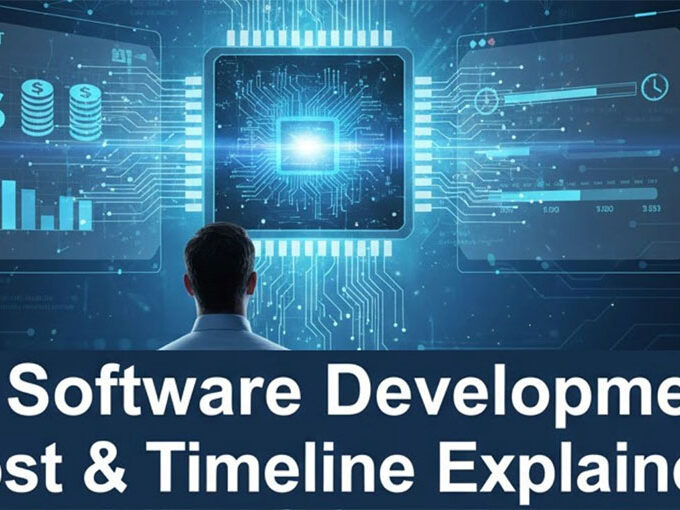Embedded Linux is a streamlined version of the Linux operating system (OS). It is open-source and cost-effective, making it developer-friendly, but not all platforms are created equally. Specialized versions have existed for years, but their functionality is limited, and upgrades depend highly on the provider, resulting in vendor lock-in and unpatched vulnerabilities.
Today’s products support vast Internet of Things (IoT) fleets and mission-critical defense applications, so security is a huge concern. That’s why integration of development, security and operations (DevSecOps) is essential.
Which Embedded Linux Platform Offers the Best DevSecOps Integration?
While seeking an embedded Linux platform, support for real-time kernel configuration and optimization via patches that enable predictable, low-latency performance is crucial if your application is time-sensitive. Customization options are excellent if you need granular control or want to minimize friction during implementation.
Another primary consideration is long-term support (LTS) over the product’s life cycle. Once releases reach their end-of-life stage, they will stop receiving maintenance, support and vulnerability fixes. Industry-leading providers typically guarantee updates for 10 years or more.
The top contenders are Lynx, Timesys, Canonical, Wind River and Foundries.io.
| Platform | Customizability | Real-Time Capability | Support Length |
| Lynx’s embedded Linux platform | Yes | Yes | At least 10 years |
| VigiShield Secure by Design by Timesys | Yes | Yes | Up to 10 years |
| Ubuntu Core by Canonical | Yes | Yes | Up to 12 years |
| Wind River’s embedded Linux platform | Yes | Yes | At least 10 years |
| FoundriesFactory by Foundries.io | Yes | Yes | Ongoing support |
Also read: Top Markdown Editors for Linux (Free and Paid)
1. Lynx’s Embedded Linux Platform
For over two decades, Lynx has expanded its client base and refined its embedded software expertise. Today, it coordinates over 200 ecosystems for more than 1,000 customers, including big names like NASA, Bosch, GE Healthcare, Lockheed Martin and the United States Army. Since it has 12 locations worldwide, it is flexible and responsive.
Lynx has specialized stacks for embedded systems, all of which have undergone rigorous testing and verification. It has set new standards for secure connectivity, including the industry’s first safety-certified IPv6 software stack.
It designs its solutions to meet or exceed industry security and performance standards. The real-time embedded Linux platform was purpose-built for time-sensitive edge applications. It integrates central and graphics processing unit technologies for superior processing speed, enabling edge artificial intelligence applications.
DevSecOps Integration
This embedded Linux platform offers the best DevSecOps integration. Its advanced security functionality includes kernel hardening, secure boot and encryption powered by VigiShield. The Vigiles application programming interface (API) toolkit enabled the integration. Lynx’s unified security dashboard integrates with vulnerability data for superior visibility.
The team designed this solution from the ground up to meet strict health care, aerospace, automotive and defense standards, from security to maintenance. It provides industry-leading long-term life cycle support via long-term updates, expert guidance and frozen branches. It guarantees vulnerability fixes and patches for at least 10 years.
2. VigiShield Secure by Design by Timesys
VigiShield is an embedded software security solution from Timesys — an open-source software security and engineering company with over two decades of experience. This commercial platform is centered around cybersecurity and life cycle management, so it provides a broad range of tools and services to help you implement and maintain DevSecOps practices.
DevSecOps Integration
This platform got its “Secure by Design” name from packing the comprehensive security feature implementation process into one developer-friendly security layer. You can configure it to best meet your application needs and regulatory requirements.
The core security features include secure boot, which verifies authenticity before execution to ensure your device isn’t running tampered software, end-to-end data encryption, and over-the-air (OTA) updates. These processes include secondary elements like server authentication, security audits, private key management and unauthorized rollback prevention.
A core service is Linux kernel hardening, which focuses on security-oriented configurations to minimize your attack surface. It involves disabling unused ports, controlling access and implementing logging. Timesys also offers Linux OS maintenance as a subscription service, in which it offers security updates for Buildroot, Timesys and Yocto Project build systems.
3. Ubuntu Core by Canonical
Given that Ubuntu is the world’s most widely deployed Linux distribution, it might make sense for you to use Ubuntu Core. You would use the same kernel, software and libraries, enabling a seamless transition from your development environment to deployment.
This lightweight, strictly confined solution has a certified ecosystem complete with Qualcomm, Intel and Nvidia hardware. It goes beyond an embedded Linux OS. It acts as a comprehensive deployment infrastructure. The real-time kernel integrates the PREEMPT_RT patchset to reduce latencies, allowing you to support time-sensitive IoT or fleet applications.
DevSecOps Integration
Ubuntu Core has robust security architecture controls built on a strong DevSecOps foundation. It utilizes snaps, a cross-platform, dependency-free Linux packaging format which are entirely self-contained. They even encapsulate their own file system. Since they have everything they need to run in any environment, they are easy to install, maintain and upgrade.
Core DevSecOps features go beyond seamless device management. You can ensure devices are always up to date with OTA updates in connected or air-gap environments. Agile containerisation ensures immutability and prevents corruption by strictly separating kernel, OS image and application updates.
With full disk encryption, private key-based cryptography locks disks. A secure boot also prevents tampering by consecutively validating each component’s authenticity during the boot sequence with cryptography before they are loaded into the runtime memory space.
4. Wind River’s Embedded Linux Platform
Wind River is a global leader in the embedded software industry, running hundreds of millions of deployed services worldwide. It has years of experience, 15 of which it actively contributed to open-source software. It is ISO 9001:2015 and 27001 certified, demonstrating its commitment to quality and information security.
Its products reflect its experience and high standards. Wind River Linux is a subscription-based embedded Linux development platform. It offers a comprehensive suite of tools and services to help you build and support intelligent edge devices.
There are several commercial releases. The validated community code is freely available on GitHub. It is carefully tuned for optimal performance and the security team continuously monitors vulnerabilities. The LTS has a product life cycle of 10 years, through which you’ll receive regular maintenance releases and 24/7 certified customer support.
DevSecOps Integration
This embedded Linux product is secure by design. It undergoes vulnerability scans and compliance analyses to ensure compliance with industry standards. The professionals quickly resolve any high-impact issues they discover. They also perform continuous monitoring, management and cyberthreat mitigation through the end-of-life stage.
Also read: 5 Essential Techniques to Improve DevSecOps Framework Implementation
5. FoundriesFactory by Foundries.io
Foundries.io developed FoundriesFactory as a unified system for developing, maintaining and managing embedded devices based on a Linux OS. This cloud-native platform allows you to build and deploy secure solutions for IoT and edge devices. Supported services include Google Cloud, Microsoft Azure and Amazon Web Services.
The team has decades of experience delivering embedded products, so they can fully tailor it to accelerate your time to market. The tiered pricing model offers several options that suit your project needs and cash flow restrictions. It can lower your upfront financial commitment, giving you greater flexibility.
DevSecOps Integration
This lightweight, secure-by-design platform has incorporated DevSecOps practices from device boot software to the cloud. Its Linux kernel is designed for security and maintenance. The toolset includes open-source utilities that support continuous integration/continuous development and security functions.
The security stack includes secure boot, OTA updates, remote attestation, authentication and configurable remote access control. The company allows the use of third-party hardware security element features like private key generation, cryptographic accelerators and secure credential storage.
Benefits of a Powerful Embedded Linux Platform
Generally, embedded Linux platforms help streamline operations and ensure compliance. Tailored distributions save you time, while open-source software provides complete control without the risk of vendor lock-in. These products are compatible with x86, ARM, RISC-V and PowerPC architectures, making them flexible.
Products must be secure by design or leverage DevSecOps integration to achieve these goals. Security testing, device verification and compliance checks are as essential as low latency. Modernization is key to securing software at the speed today’s interconnected, resource-intensive environments demand.
Choosing the Right Embedded Linux Platform With Integrated DevSecOps
To determine which embedded Linux platforms offering the best DevSecOps integrations will suit your needs, you should evaluate customizability, maintenance requirements, support length and compatibility. Consider the provider’s expertise and industries served before committing.










Leave a comment